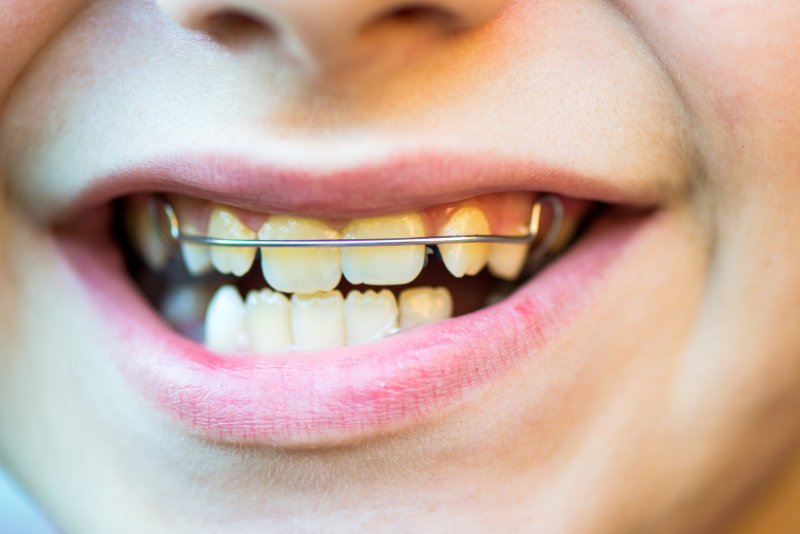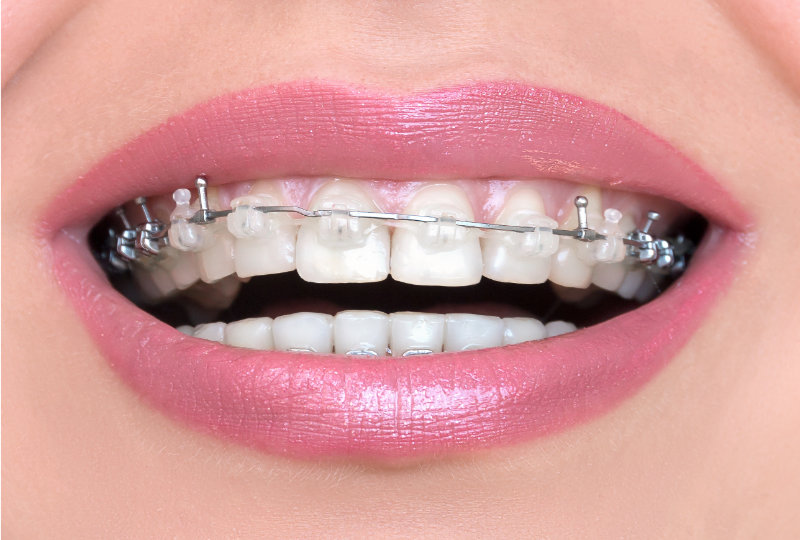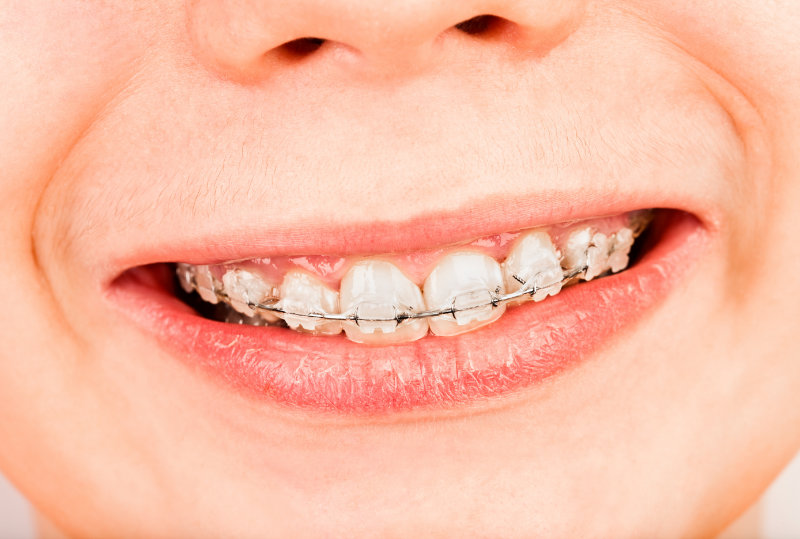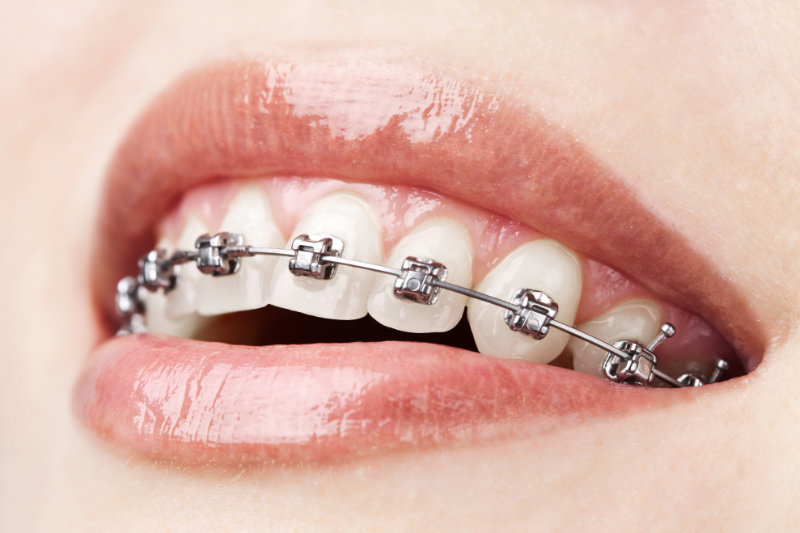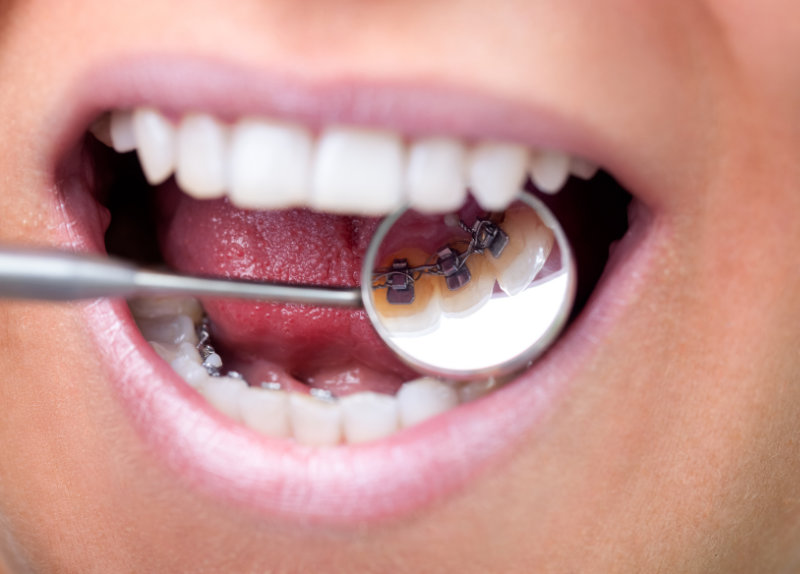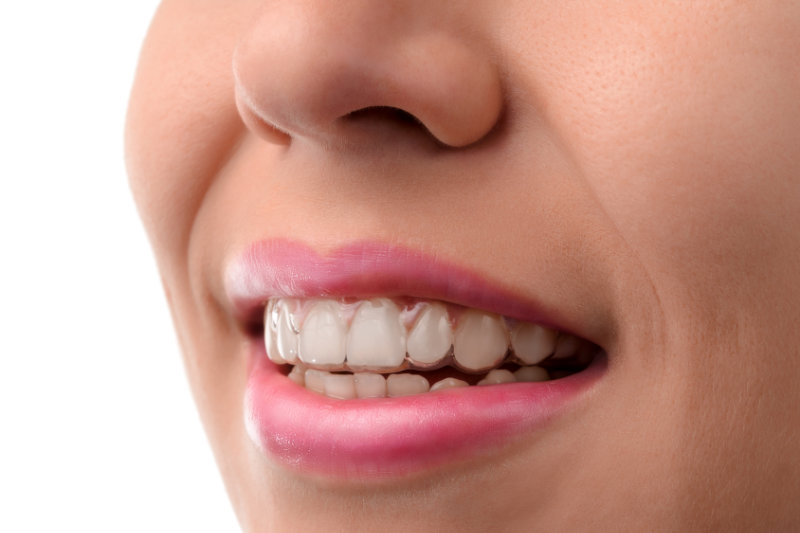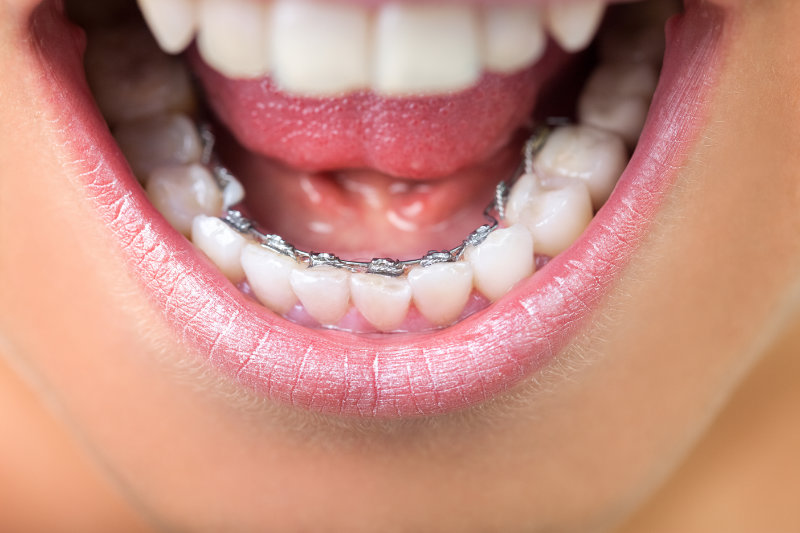
HOW DO YOU STRAIGHTEN TEETH?
To moove teeth anf get them in the “right” places, forces need to be applied on the teeth themselves. To do this, the specialist must use mechanical aids, commonly referred to with the overall name of “braces”
Removable Braces
One of the first questions patients ask me is: “Tell me Doctor, do my braces have to be fixed or can I have removable ones?” There seems to be a net preference for removable braces. This is because the patient thinks that they will only have to use it for a limited amount of time, such as night-time only, and avoid the embarrassment of “being seen” with braces. There is also a common belief (unfortunately, held by some dentists too) that removable braces are a lot less trouble and, therefore, better for children. Both of these ideas are wrong. The force that must be exerted on the teeth needs to be constant, otherwise you lose the position gained while wearing the braces the moment you take them off. Obviously, you lose the esthetic advantage of the removable braces. Patients also tend to forget to put braces back in, hindering good teeth movement even further. Moving teeth is already slow enough with removable braces.
This means a waste of time on the patients’ side and of money on the parents’ side, with little or no concrete results. The patient usually ends up moving on to fixed braces later, regardless. Another falsehood is that fixed braces are more demanding or less advisable for children. In fact, not having to rely on the child’s cooperation (fundamental if using removable braces), fixed braces mean a pretty certain result with lesser commitment from both patient and parents.
Fixed Braces
“Fixed braces” covers the combination of elements fixed to the teeth. They are made up of brackets, steel wire arches and other similar elements. This system gives total control over the movement of the teeth, with little or no commitment on the patients’ behalf. It is common opinion that fixed braces have more disadvantages when compared to removable ones. Let’s compare them. Esthetically displeasing: This is simply because the removable brace can be taken out. But, as we have already seen, a brace only works while it is in place. So, if you wish it to work, you must wear it always. A removable brace is no more beautiful than a fixed one.
Dental pain and gum discomfort: Teeth pain is common when treatment begins. The cheeks may also become irritated, maybe more so than the gums. This, however, is only temporary and can easily be kept in check. Formation of caries: Caries are not determined by the type of brace used. They are brought on by the stagnation of plaque on the teeth. If the brace wearer, regardless of the brace type, cleans hem correctly, caries will never develop.
Invisible Braces
Dentists, of course, completely understand that wearing visible braces can make the patient uneasy, especially at certain ages. For this very reason, a lot of research was done to make braces more esthetically pleasing. Braces have become smaller, and are made of less blatant substances, such as ceramic. A brilliant esthetic solution is the application of braces to the back of the teeth – these are known as lingual braces. This type of brace is ideal for adults and adolescents. Any type of treatment can be carried out and it is practically invisible. This type of brace can only be inserted by a specifically trained professional.
Another esthetically pleasing solution can be clear aligners. One of the leading brands in this field is Invisalign. Clear aligners are removable braces that need to be worn constantly. Thanks to their specific design, good results are obtained in specific cases. These are best indicated for adult patients and, again, must be supervised by a specialized practitioner.

